- Rare earth: health and environment effects
- Whether rare earth elements are harmful or not depends on the amount and duration of exposure. Usually, only when a person is exposed to a great quantity of REE over a long time, is it possible the result will be serious.
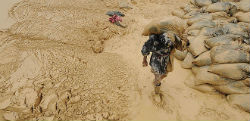 For example, the Bukit Merah mine in Malaysia has been the focus of a US$100 million clean-up which took place in 2011. "Residents blamed a rare earth refinery for birth defects and eight leukemia cases within five years in a community of 11,000 people after many years with no leukemia cases." Seven of the leukemia victims died. After having accomplished the hilltop entombment of 11,000 truckloads of radioactively contaminated material, the project was expected to entail the removal, in summer, 2011, of "more than 80,000 steel barrels of radioactive waste to the hilltop repository." One of Mitsubishi's contractors for the clean-up was GeoSyntec, an Atlanta-based firm. Osamu Shimizu, a director of Asian Rare Earth, said: "The company might have sold a few bags of calcium phosphate fertilizer on a trial basis as it sought to market byproducts," in reply to a former resident of Bukit Merah who said: "The cows that ate the grass grown with the fertilizer all died." In addition, the cancer rate in the village of Baiyun Obo mine is quite high, and the sheep's wool is ugly in appearance, and some sheep having internal and external double teeth.
For example, the Bukit Merah mine in Malaysia has been the focus of a US$100 million clean-up which took place in 2011. "Residents blamed a rare earth refinery for birth defects and eight leukemia cases within five years in a community of 11,000 people after many years with no leukemia cases." Seven of the leukemia victims died. After having accomplished the hilltop entombment of 11,000 truckloads of radioactively contaminated material, the project was expected to entail the removal, in summer, 2011, of "more than 80,000 steel barrels of radioactive waste to the hilltop repository." One of Mitsubishi's contractors for the clean-up was GeoSyntec, an Atlanta-based firm. Osamu Shimizu, a director of Asian Rare Earth, said: "The company might have sold a few bags of calcium phosphate fertilizer on a trial basis as it sought to market byproducts," in reply to a former resident of Bukit Merah who said: "The cows that ate the grass grown with the fertilizer all died." In addition, the cancer rate in the village of Baiyun Obo mine is quite high, and the sheep's wool is ugly in appearance, and some sheep having internal and external double teeth. - Source: en.wikipedia.org/wiki/Rare_earth_element
- Lipton oolong tea found with toxic content in China
 A Tieguanyin variety of oolong tea, produced by Lipton, part of the Unilever group, was found to contain excessive levels of potentially harmful rare-earth elements, China's quality watchdog said in 2011.
A Tieguanyin variety of oolong tea, produced by Lipton, part of the Unilever group, was found to contain excessive levels of potentially harmful rare-earth elements, China's quality watchdog said in 2011. - How do REE get into and out of the body?
- Usually, REE get into the body via the mouth, respiratory tract, skin and injections. The ways it is removed from the body include: Ln, mainly by the urine, bile and gastrointestinal tract; commonly, from La to Sm, out of the body along with the bile discharge; and from Tb to Lu, mainly via the kidneys along with urine.
- Tips
- If you work or live around an REE environment, please take measures to protect yourself from REE and have regular medical check-ups to keep healthy.
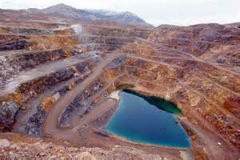 If rare earth resources are not mined and developed properly, not only does it result in economic losses for countries, but it also does great harm to global ecotopes, especially during the processes of mining, refining and recycling, which may result in serious environmental consequences. A particular hazard is mildly radioactive slurry tailings resulting from the common occurrence of thorium and uranium in rare earth element ores. A series of environmental problems including water and soil loss, landslides, cracked ground and settlement, destruction of fertile land, water eutrophication in the mining area, heavy metal pollution and so on will follow one after another.
If rare earth resources are not mined and developed properly, not only does it result in economic losses for countries, but it also does great harm to global ecotopes, especially during the processes of mining, refining and recycling, which may result in serious environmental consequences. A particular hazard is mildly radioactive slurry tailings resulting from the common occurrence of thorium and uranium in rare earth element ores. A series of environmental problems including water and soil loss, landslides, cracked ground and settlement, destruction of fertile land, water eutrophication in the mining area, heavy metal pollution and so on will follow one after another. 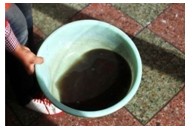 For example, in May 2010, China announced a five-month crackdown on illegal mining in order to protect the environment and rare earth resources. As the major REE producing country in the world, many places in China-particularly in southern areas where the illegal operations are continuing unabated- some toxic wastes have found their way into the general water supply. Even in Baotou, Inner Mongolia and Ganzhou, which are rich in REE resources, environmental damage has been caused by the mining and refining of REE.
For example, in May 2010, China announced a five-month crackdown on illegal mining in order to protect the environment and rare earth resources. As the major REE producing country in the world, many places in China-particularly in southern areas where the illegal operations are continuing unabated- some toxic wastes have found their way into the general water supply. Even in Baotou, Inner Mongolia and Ganzhou, which are rich in REE resources, environmental damage has been caused by the mining and refining of REE. 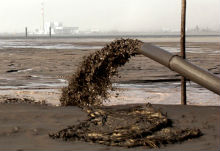 It is said that the areas around the workings are no longer suitable for human habitation by local residents. Because the water supply around the workings has been seriously polluted (as you can see in the picture), the villagers now have to walk a long way to get drinking water. This phenomenon has occurred around many REE ores, causing outbreaks of disease to occur among local residents and costing a huge amount to manage the environmental problems. All in all, China has contributed greatly to the REE supply market but meanwhile, it will take a long time and cost a great deal of money to restore the environment and ensure the sustainable development of the REE industry.
It is said that the areas around the workings are no longer suitable for human habitation by local residents. Because the water supply around the workings has been seriously polluted (as you can see in the picture), the villagers now have to walk a long way to get drinking water. This phenomenon has occurred around many REE ores, causing outbreaks of disease to occur among local residents and costing a huge amount to manage the environmental problems. All in all, China has contributed greatly to the REE supply market but meanwhile, it will take a long time and cost a great deal of money to restore the environment and ensure the sustainable development of the REE industry. - In addition, an article “UN investigation into Malaysia rare-earth plant safety” reported that “UN nuclear energy experts are in Malaysia to investigate whether a planned rare-earth refinery may pose a risk of radioactive pollution.” (May, 2011). And in Dec. 2012 another article “Malaysians’ latest drive against Lynas plant” said that “A convoy of cars carrying protesters has driven across Malaysia in the latest demonstration against an Australian rare earths plant that activists claim will produce dangerous radioactive waste.” All the above reports show that rare earth ore mining has seriously affected both human health and the environment.
- The EPA has produced the following table.
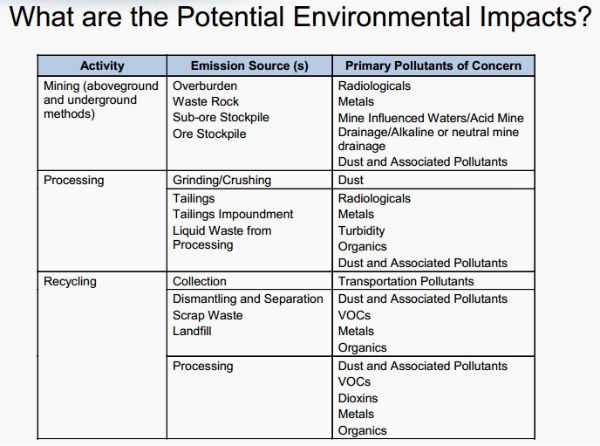
- Source: http://www.epa.gov/superfund/remedytech/tsp/download/2012_spring_meeting/fff_wed/4_weber-rare_earth_minerals.pdf
-
About us
Contact us
Make a suggestion
- Metalpedia is a non-profit website, aiming to broaden metal knowledge and provide extensive reference database to users. It provides users reliable information and knowledge to the greatest extent. If there is any copyright violation, please notify us through our contact details to delete such infringement content promptly.
 For example, the Bukit Merah mine in Malaysia has been the focus of a US$100 million clean-up which took place in 2011. "Residents blamed a rare earth refinery for birth defects and eight leukemia cases within five years in a community of 11,000 people after many years with no leukemia cases." Seven of the leukemia victims died. After having accomplished the hilltop entombment of 11,000 truckloads of radioactively contaminated material, the project was expected to entail the removal, in summer, 2011, of "more than 80,000 steel barrels of radioactive waste to the hilltop repository." One of Mitsubishi's contractors for the clean-up was GeoSyntec, an Atlanta-based firm. Osamu Shimizu, a director of Asian Rare Earth, said: "The company might have sold a few bags of calcium phosphate fertilizer on a trial basis as it sought to market byproducts," in reply to a former resident of Bukit Merah who said: "The cows that ate the grass grown with the fertilizer all died." In addition, the cancer rate in the village of Baiyun Obo mine is quite high, and the sheep's wool is ugly in appearance, and some sheep having internal and external double teeth.
For example, the Bukit Merah mine in Malaysia has been the focus of a US$100 million clean-up which took place in 2011. "Residents blamed a rare earth refinery for birth defects and eight leukemia cases within five years in a community of 11,000 people after many years with no leukemia cases." Seven of the leukemia victims died. After having accomplished the hilltop entombment of 11,000 truckloads of radioactively contaminated material, the project was expected to entail the removal, in summer, 2011, of "more than 80,000 steel barrels of radioactive waste to the hilltop repository." One of Mitsubishi's contractors for the clean-up was GeoSyntec, an Atlanta-based firm. Osamu Shimizu, a director of Asian Rare Earth, said: "The company might have sold a few bags of calcium phosphate fertilizer on a trial basis as it sought to market byproducts," in reply to a former resident of Bukit Merah who said: "The cows that ate the grass grown with the fertilizer all died." In addition, the cancer rate in the village of Baiyun Obo mine is quite high, and the sheep's wool is ugly in appearance, and some sheep having internal and external double teeth.  A Tieguanyin variety of oolong tea, produced by Lipton, part of the Unilever group, was found to contain excessive levels of potentially harmful rare-earth elements, China's quality watchdog said in 2011.
A Tieguanyin variety of oolong tea, produced by Lipton, part of the Unilever group, was found to contain excessive levels of potentially harmful rare-earth elements, China's quality watchdog said in 2011.  If rare earth resources are not mined and developed properly, not only does it result in economic losses for countries, but it also does great harm to global ecotopes, especially during the processes of mining, refining and recycling, which may result in serious environmental consequences. A particular hazard is mildly radioactive slurry tailings resulting from the common occurrence of thorium and uranium in rare earth element ores. A series of environmental problems including water and soil loss, landslides, cracked ground and settlement, destruction of fertile land, water eutrophication in the mining area, heavy metal pollution and so on will follow one after another.
If rare earth resources are not mined and developed properly, not only does it result in economic losses for countries, but it also does great harm to global ecotopes, especially during the processes of mining, refining and recycling, which may result in serious environmental consequences. A particular hazard is mildly radioactive slurry tailings resulting from the common occurrence of thorium and uranium in rare earth element ores. A series of environmental problems including water and soil loss, landslides, cracked ground and settlement, destruction of fertile land, water eutrophication in the mining area, heavy metal pollution and so on will follow one after another.  For example, in May 2010, China announced a five-month crackdown on illegal mining in order to protect the environment and rare earth resources. As the major REE producing country in the world, many places in China-particularly in southern areas where the illegal operations are continuing unabated- some toxic wastes have found their way into the general water supply. Even in Baotou, Inner Mongolia and Ganzhou, which are rich in REE resources, environmental damage has been caused by the mining and refining of REE.
For example, in May 2010, China announced a five-month crackdown on illegal mining in order to protect the environment and rare earth resources. As the major REE producing country in the world, many places in China-particularly in southern areas where the illegal operations are continuing unabated- some toxic wastes have found their way into the general water supply. Even in Baotou, Inner Mongolia and Ganzhou, which are rich in REE resources, environmental damage has been caused by the mining and refining of REE.  It is said that the areas around the workings are no longer suitable for human habitation by local residents. Because the water supply around the workings has been seriously polluted (as you can see in the picture), the villagers now have to walk a long way to get drinking water. This phenomenon has occurred around many REE ores, causing outbreaks of disease to occur among local residents and costing a huge amount to manage the environmental problems. All in all, China has contributed greatly to the REE supply market but meanwhile, it will take a long time and cost a great deal of money to restore the environment and ensure the sustainable development of the REE industry.
It is said that the areas around the workings are no longer suitable for human habitation by local residents. Because the water supply around the workings has been seriously polluted (as you can see in the picture), the villagers now have to walk a long way to get drinking water. This phenomenon has occurred around many REE ores, causing outbreaks of disease to occur among local residents and costing a huge amount to manage the environmental problems. All in all, China has contributed greatly to the REE supply market but meanwhile, it will take a long time and cost a great deal of money to restore the environment and ensure the sustainable development of the REE industry. 
